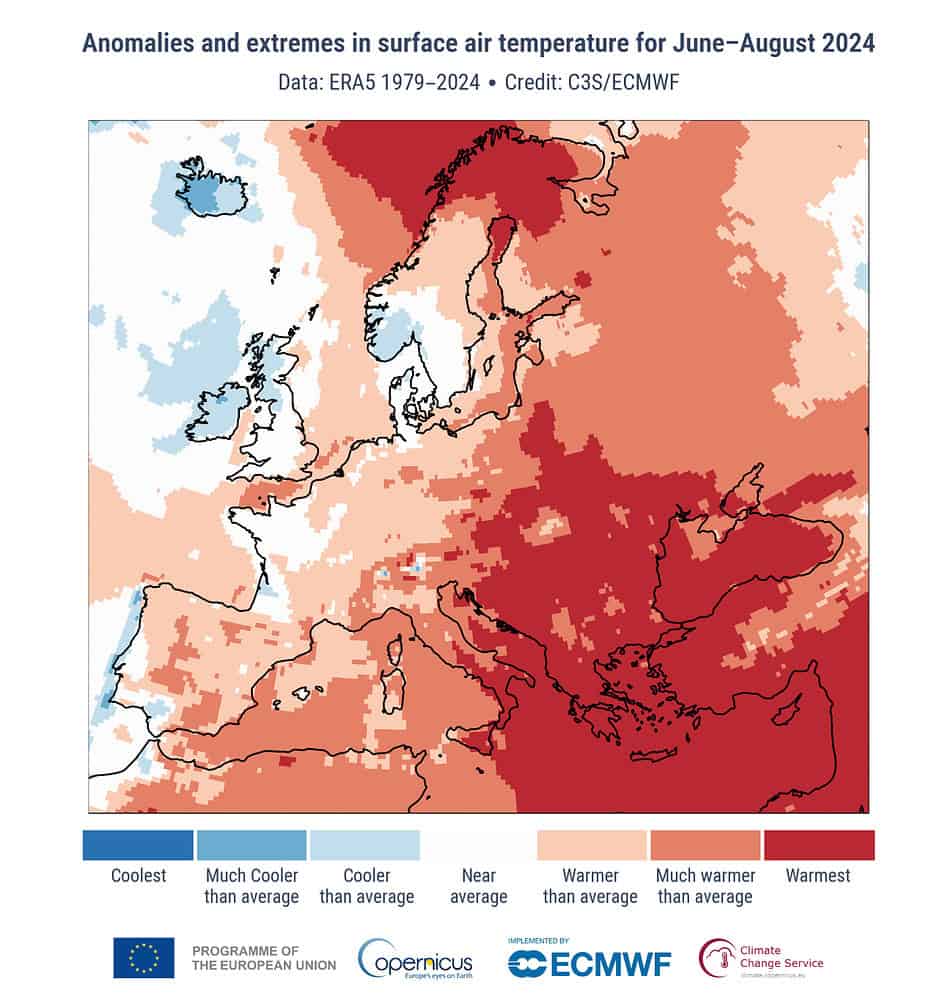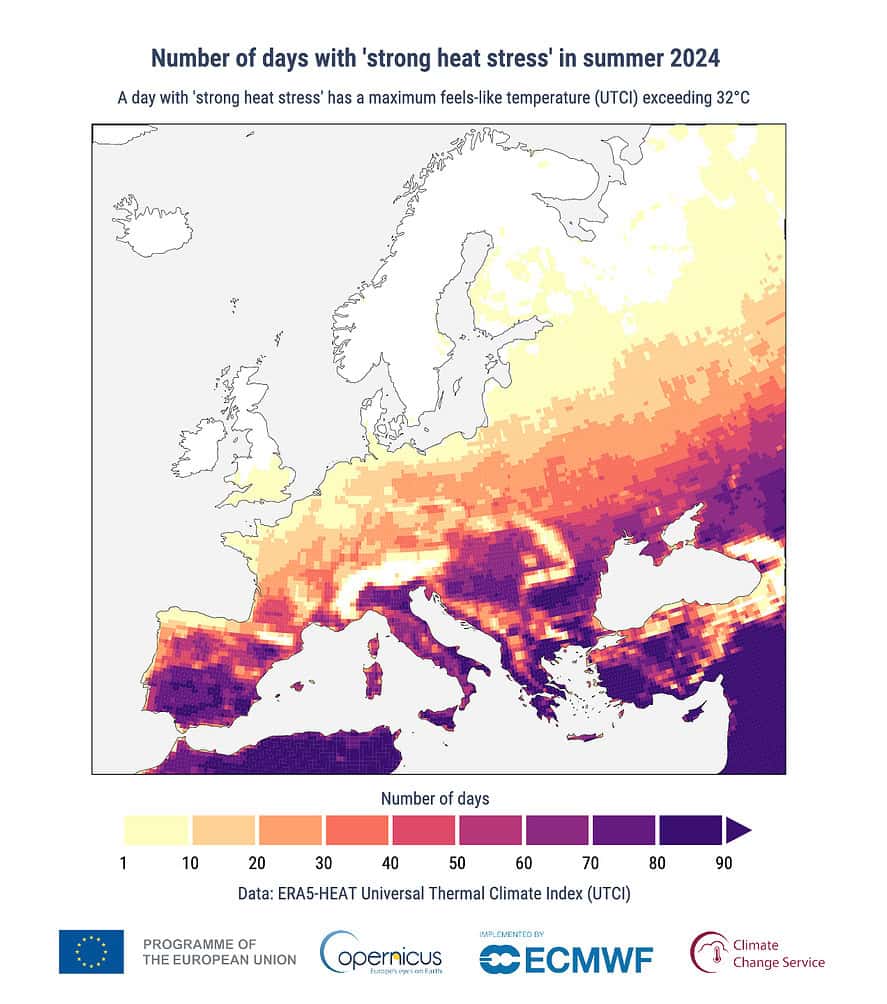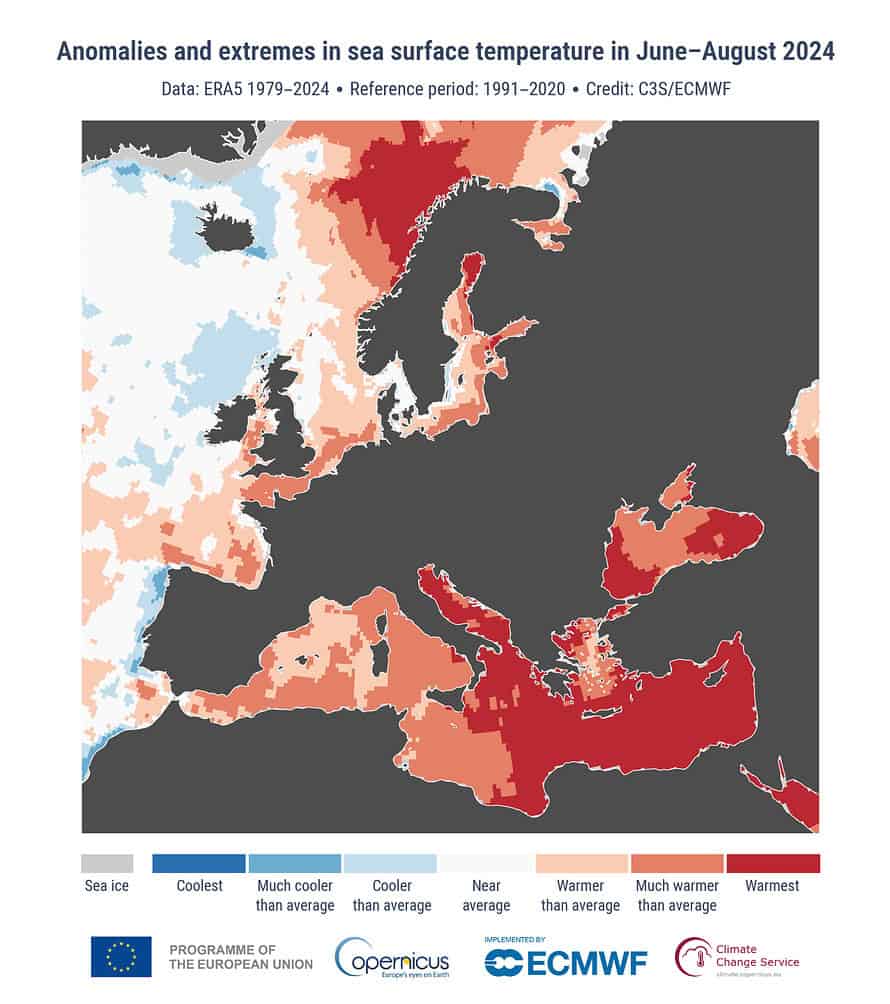
The summer is behind us; data show it was the warmest ever recorded in Europe. The average air temperature over European land between June and August was the highest for the season, at 1.54°C over the 1991-2020 average. But while some areas broke records for the number of days under heat stress, others experienced temperatures below average and more wet days.
Data collected by the Copernicus Climate Change Service (C3S) was released last week to paint a complete picture of summer 2024. Using measurements by the Copernicus satellite, the service aims to support the European Union’s adaptation and mitigation policies by offering relevant climate change data. Let’s dig into the numbers.
About Behind the Figures
In Behind the Figures, we take a deep dive into one figure in every episode. Using charts and graphs, we break them down and provide context to help you make more sense of them.
How does summer 2024 compare to the previous ones?
Summer 2024 broke the previous record set in 2022 by 0.2°C. According to the measurement, each of the three months ranked second warmest on record for the month in question. June and August temperatures were 1.57°C higher than the average, while July ones were 1.49°C warmer. The recent years’ trend shows hotter summers than in the past.
Surface air temperature is the value of air temperature measured at 2 meters above the ground or ocean surface. It is the same value as the temperature included in conventional weather reports. The column chart below signals the variations from the average summer air temperatures recorded between 1991 and 2020.
Southeastern Europe, the hottest area
Southeastern Europe was by far the warmest area, reaching record-breaking temperatures. Satellite data show that the whole of Greece, Cyprus, North Macedonia, the majority of Romania and Bulgaria, and the south of Italy broke records for surface air temperature. The Balkan countries and large areas of the Eastern countries also broke records. Interestingly, the C3S also shows how record-breaking values were recorded in the North of the Scandinavian peninsula.

The report also shows the number of days with ‘strong heat stress,’ a day with a maximum feels-like temperature exceeding 32°C. Feels-like temperature also considers humidity, wind speed, sunshine, and how the body responds to different thermal environments. Large stretches of Southern Europe had two full months of strong heat stress, while some areas in Turkey and Greece experienced 90 days of such stress. Very strong heat stress days—maximum feels-like temperature exceeding 38°C —occurred in much of southern and eastern Europe, similar to 2023 figures.

Since the turn of the century, the average number of days with strong heat stress has increased in southeastern Europe. The report considers southeastern Europe an ideal rectangle from Croatia to Turkey. 2024 also marked a record in this figure, with, on average, over 37 days having a daily maximum of over 32°C.

Hot waters
The report also presents figures for sea surface temperatures. Daily sea surface temperatures (SSTs) averaged across the Mediterranean Sea peaked at 28.45 °C on August 13. The figure beat the previous record set in July 2023 (28.20 °C). The averaged data shows temperatures warmer than average in the entire Mediterranean Sea. The waters were warmest in the southeast of the basin, on the coast of Turkey and Greece, and in the Adriatic Sea.
Meanwhile, the Norwegian Sea and the Atlantic Ocean temperatures were cooler than average. Specifically, waters off the west of the Irish shoreline, around Iceland, and the Iberic peninsula were colder than usual.

Wetter northern Europe
By contrast, northern and western Europe recorded above-average wet days—with more than or equal to 1 mm of rain. The number of rainy days in parts of the Northern UK and Ireland, the Scandinavian peninsula, and the Baltic countries was higher than usual. June was the rainiest month in these areas, while August was drier throughout continental Europe, the UK, and Ireland. By contrast, most Mediterranean areas and the Balkans experienced drought conditions, affecting water availability.

Another figure the report mentions is the average river flow across Europe. Interestingly, some of the most important basins—including the Danube, the Rhein, and the Seine—had exceptionally high river flows for the season, consistent with the precipitation that occurred in those areas. Conversely, 35% of European river flows were low or exceptionally low compared to the 1991-2020 average in the areas most impacted by heatwaves, such as the Balkans and the South of Europe.
New records behind the corner
Europe is the fastest-warming continent in the world, with temperatures rising at twice the global average rate. This trend will continue, if not worsen, shortly. According to analyses by the World Meteorological Organization (WNO), we will probably soon exceed pre-industrial temperatures by 1.5°C for the entire five-year period 2024-2028. The organization says there is an 80% likelihood that the annual average global temperature will surpass that level in the coming five years. As a result, more heatwaves and extreme temperatures are expected in Europe, and new records might be set before long.

